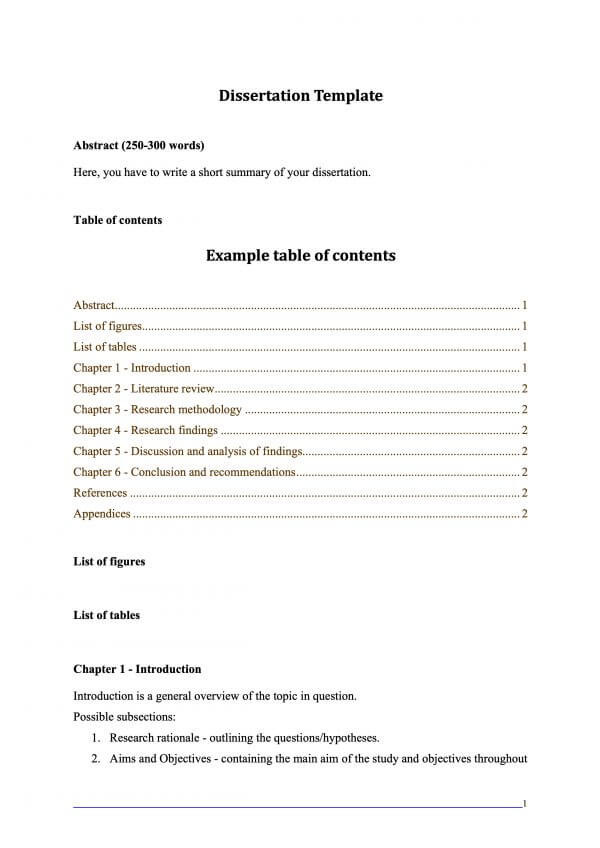A dissertation is a research paper required to obtain a Ph.D./doctoral degree. All scientific works (master’s, candidates, doctoral) have their own recommended period for preparation and writing. It may seem quite difficult for many students, so we are here to help you and that is why we made you a short guide about the right way of structuring the dissertation.
A dissertation template, on the other hand, is a ready-to-use document that serves the same purpose as a handwritten dissertation and is just needed to be filled.
A Ph.D. thesis is always a qualifying work. You are defending a paper in which you show your qualifications. This does not have to be some kind of breakthrough direction in science or practice. But sometimes this concept is somehow simplified. It is believed that if you have written several formulas or 150 pages of reasoning, the qualification work is already ready and you can go to defend it.
However, it is not that easy. In any case, a candidate’s dissertation should contain at least a new look at some well-known problem statements or some new solutions. If you are not sure that you can cope with such work, then it is better to seek help from dissertation writing services.
Guidelines to Write a Dissertation
Step 1: Write a good thesis statement
There is no single formula for writing a thesis. It’s important to look at some of the examples in your field early on to just “get a feel” for what they look like. The easiest way to do this is to visit the university library and look at examples written by previous students (study recommendations like “how to write a thesis?”). If you are not studying at a university yet, you can still arrange to visit the library at the nearest university. It is important to plan your thesis carefully. One decision you will need to make is how your own dissertation should be organized.
Step 2: Form intriguing questions
When there is an inquiry, it turns out to be clear into which parts it should be partitioned – and these are the sections of your thesis. It turns out a plan of inquiries – and this is the structure of your work.
This entire structure ought to be in your mind from the earliest starting point. If you have no inquiries, at that point, you are working with dead material: in the event that you don’t do not ask it about anything, then it will not tell you about anything.
Questions (and, accordingly, the content of sections) are refined and changed. On the off chance that the first plan hasn’t changed, at that point, this is somewhat dubious. This implies, presumably, you didn’t study or consider it, however, arranged the material to the current inquiries and, no doubt, the appropriate responses.
The first structure is continually being amended. Be that as it may, it is the original structure that is the heading of your movement. In certain circumstances, you may even understand that you are at an impasse.
Remember that you can write good work with the wrong work plan, but you cannot write without a plan. The earlier you complete the structure, the more chances you have to cope with the work well and non-traumatically for yourself.
Step 3: Define the object and subject
Object and subject are related as whole and particular. An object is a difficult field, an item is a detail, by the case of which the sign of an issue is evident, and it is possible to offer its solution.
It should be borne in the top that in a number of studies, the object and subject of the study are not shown by any means: at that point, the difficult field and the material on which the researcher works ought to be comprehended from the arrangements submitted for defense.
An example of a dissertation structure:
- title page;
- table of contents and contents;
- a list of abbreviations, if they were used in the text;
- introduction (usually takes 2-7 pages);
- the main part (contains on average 4-5 sections);
- conclusions (should correspond to the tasks listed in the introduction);
- practical recommendations (if any);
- list of literature sources;
- appendix where information is indicated that is not included in the main sections, acts of implementation, copyright certificates (if any).
Dissertation Template
Related: How to Format a Research Paper
End Note
Before writing a thesis yourself and quickly, you need to clearly define for yourself why you need it, what goals you are pursuing. The work will not cause difficulties if you devote time to it every day, act consistently, in accordance with the drawn-up plan. There is no need to set super-tasks, apply excessive efforts; otherwise, you can quickly fizzle out, lose interest in research.
Observe all the requirements, often appear in the circles of scientific communities to make useful contacts, find like-minded people, learn from the experience and knowledge from reputable scientists. Then, not only writing but also defending a thesis will be easy and painless.
